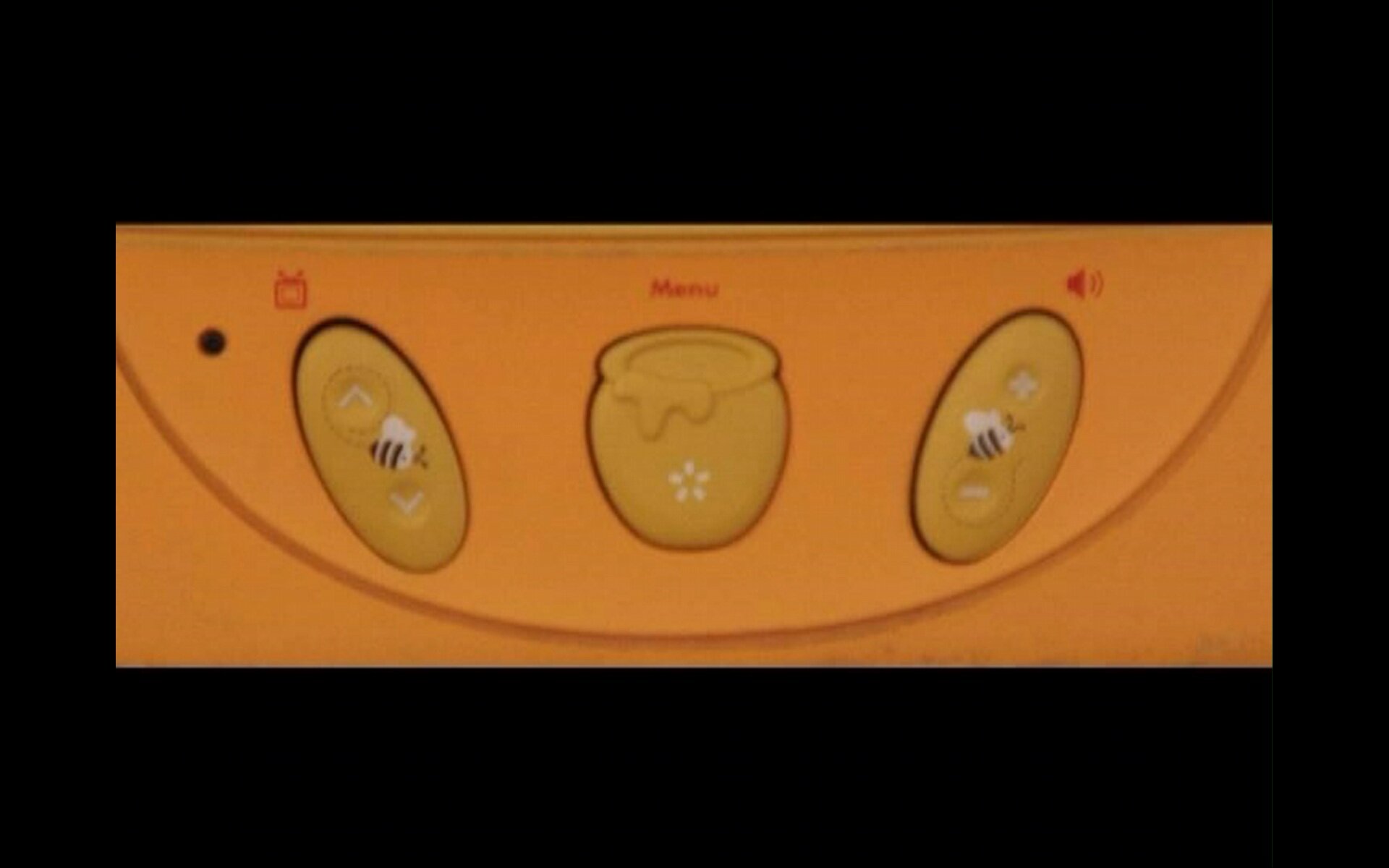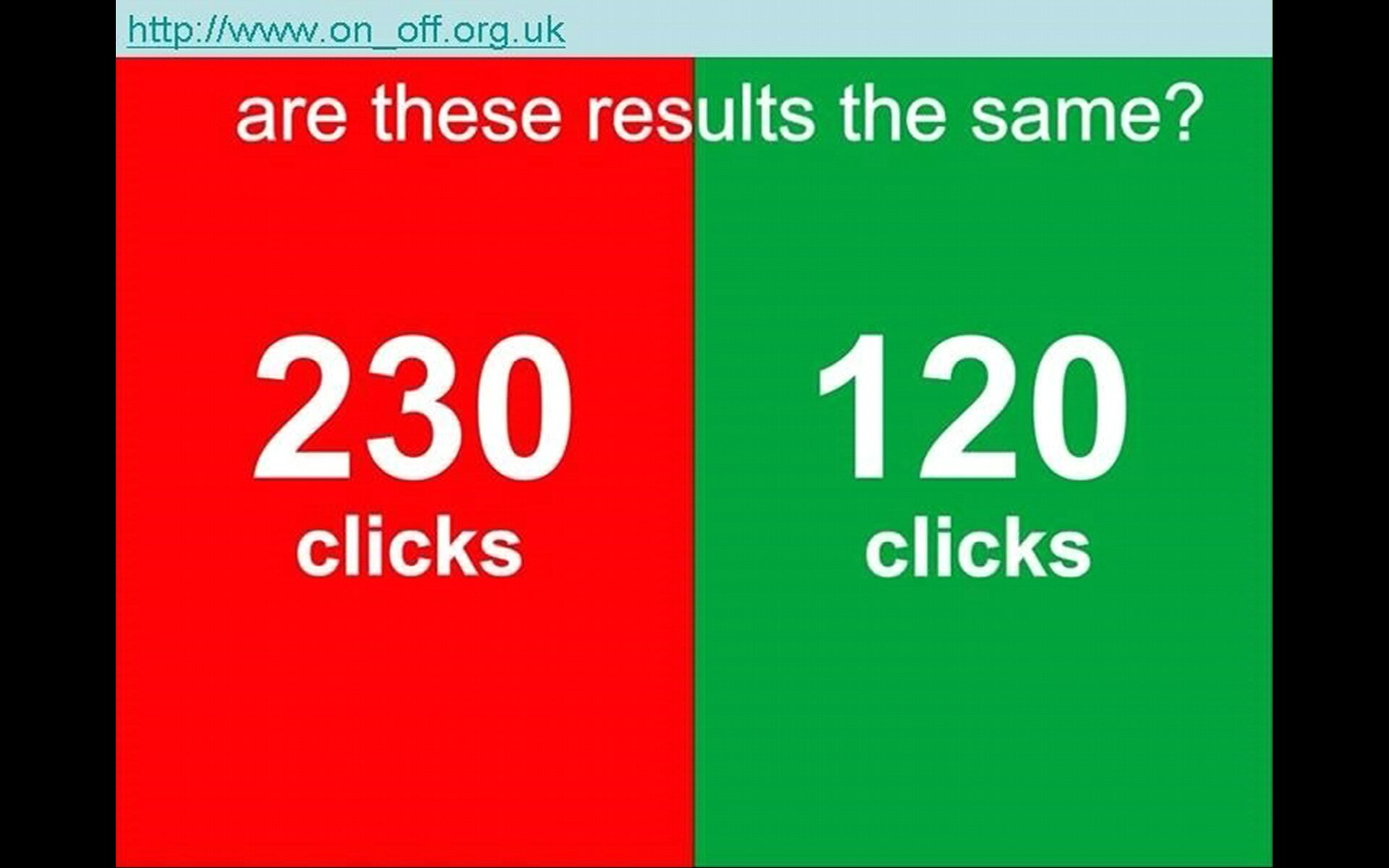Bucharest Biennial, 2010
ON OFF interactive and film.
October - November, 2010






October 12 - November 12, 2010
The Biennale took place in Bucharest, October 12 - November 12, 2010.
All visual documentation of this event was lost in the middle of a backing up session - a burglary after returning home.
police the police
The Biennial of Young Artists’ fourth edition, Bucharest 2010, opens with quite an untranslatable mirroring word pun: “police the police”. There is something tricky in the constructive symmetry of this message and in its automatically imperative stance. It seems to be captured in the net of mere illustrative restriction and second offence imminence. It would be rather superficial, nonetheless, if it went only as a militant and rebellious impetus or as yet another predictable and exhausted form of institutional critique. I would like to give for this year’s theme and exhibition another angle of incidence, modeled by a certain polymorphism, stringently contemporary and ubiquitously felt.
Policing ways of seeing are intimately linked with observance and surveillance strategies, with relationships between the observer and the observed, with points of vision and position, with tracking and targeting techniques, with mingled regulating forms of control, protection and sanction. Seen in these terms, there is some basic epistemological complementariness between police praxis and any visual study or historiography – same decoding phantasms, same morellian inductions, and same indicial reconstructions.
Going farther. I will introduce as a fertile and more indeterminate antiphrasis for the surveillance notion its counter-part concept, “sousveillance”. Launched some time ago by Steve Mann as an accompanying notion for his hybrid cyborg surveillance and mediating extensions, “sousveillance” literally designated a form of “appropriating the tools of the oppressor”, in a fundamental subversion of any Panoptikon logics. More recently and more locally oriented, Rob O’Copp’s Nottingham Office of Community Sousveillance opposes, doubles and thoroughly watches community police officers by registering their sideslips.
I convoke this notion today and I would like to test and confront it in this edition with other chameleonic artistic practices that make use of it in their civic dilemmas. How do artists and cultural activists tackle such a political subject in their work, how do they react in their own counter-observance actions towards authority and control, how do they carry their own investigations, how do they launch speculations, pendulating between “wakefulness” and “watchfulness”? How do they work “under cover” in dreaming of full disclosure?
Reminder. On the local Romanian scene, the “surveillance” history activates in the private and public space and memory long time invasive practices (acquired, hereditary, suffered of or inflicted upon others). Recent cultural productions plunged in and exploited this rich invisible heritage with its recurrent lieux de mémoire. Not to mention the paradigmatic figure of the policeman, subject to so many fictive screenplays, vampirized and mocked, nurturing his duplicities or fearing his versatility. Talking today about “sousveillance” tries to breech revolute lines of thought and reflex associations. It tries to understand the way contemporary cultural practitioners grasp this emblematic figure of control and all its possible disguises, far more diffuse and imperceptible, far more allusive and infiltrative. Local interventions (recent projects as well as historical sparkles) will try to articulate this proposition in collaborating with a wide range of attitudes, situations, objects, discourses and devices, multilayered and spread on various theoretical platforms and different international entry and view points.
Bandwidth. In analyzing Montaigne’s reflections and Walter Benjamin’s “Critique of Violence”, Jacques Derrida was reactivating one oracular saying about those legitimate fictions our law is based on. On another level, one should keep in mind the abundance of heterogeneous visionary inventions deploying in fantasy literature an impressive technical inventory that never ceases to proliferate.
More than activist radicalism, I think of an activist reverie and of giving a fictional, metaphorical indentation to this exhibition. In re-instating an old-time fantasy, could we still dribble power today through a visual “dazzling” reaction?
Mica Gherghescu Curator
Full catalogue pdf (8.01MB) Artstation page 62: download
ON-OFF
DVD and web interface
A DVD of the public performance, research and a power point lecture was created for projection as part of the show in Stirbie Palace in Bucharest. In faded grandeur the old gentry building was given to the state many years before and now shambled in poor condition.
The invitation to show there as part of the 4th Young Artists Biennale titled Police the Police, was made by Curator Mica Gherghescu. The art critic and historian was attracted to ON-OFF as a sousveillant work (to look back at control).
Costs of transporting the physical works (ON_OFF switch boards) originally commissioned by R8R for Surface Gallery in Nottingham was too great.
Consequently a DVD was made on arrival in Bucharest in discussion with Mica and presented as projected material and seen as as part of the circulation through the first floor of the exhibition. The material was looped.
A new repeating ON OFF web installation was commissioned: The page shows results then returns when allowing unlimited clicks.
The Exhibition BROCHURE features all artists who showed. Printed catalogues and a CMYK META Foundation Publication was also given to all artists.
ON FAUX science...
A new ON OFF web interface was created with a minimally different rule base to the original commission.
For gallery presentation - the Bucharest ON OFF counter allowed multiple user inputs (clicks), rather than limiting a user to a single click.
Statistical subconscious attraction was counted, to the condition ON, in association with colour RED, opposed to the inverse, ' ecological' colour GREEN and the condition OFF. The choice of either ON or OFF, returned a pair of numbers showing the overall On and OFF counts - the statistics of attraction were immediately distributing to those who needed to know(the users).
This ON-OFF art concept was developed by GD from the IAT test discussed in Malcolm Gladwell’s 2005 book Blink : thinking with out thinking. The Implicit Association Test was devised to screen employment interviewees for racism.
The ON-OFF test was an absurdist or banal system, detecting if GREEN colour awareness and its association with ecology, was a less an inbred attraction, than the 'relative' excitement of turning ON, associated with RED. (a colour decisions were made by extensive button research see R8R Nottingham ).
(At MetaLab in Vienna: observers suggested extensions of this work might look at colour preference v/s behavioural choice across a range of colours - discussion continue)
Over the period of the ON-OFF research, a variance has appeared from the prediction of the original work, that users would predominate in turning ON with association RED.
From the onset, ON predominated by some 5-7% over OFF. But later, (and as recession deepened incidentally... ) the volume of ON-OFF 'hits' surpassed 2000, and the bias swung by the inverse measure ...OFF?!
There has been debate since on what caused this on what this means.
This new and surprising trend continued until... the system stopped.
The ON-OFF counter was lost.
Site version 2 (no longer working)
Bucharest: Unlimited Click Input
http://www.yourmindseye.co.uk/onoff/gallery/
Site version 1 (no longer working)
Nottingham: Single Click Input
(IP check - none return for 8 hours)
http://www.yourmindseye.co.uk/onoff/

